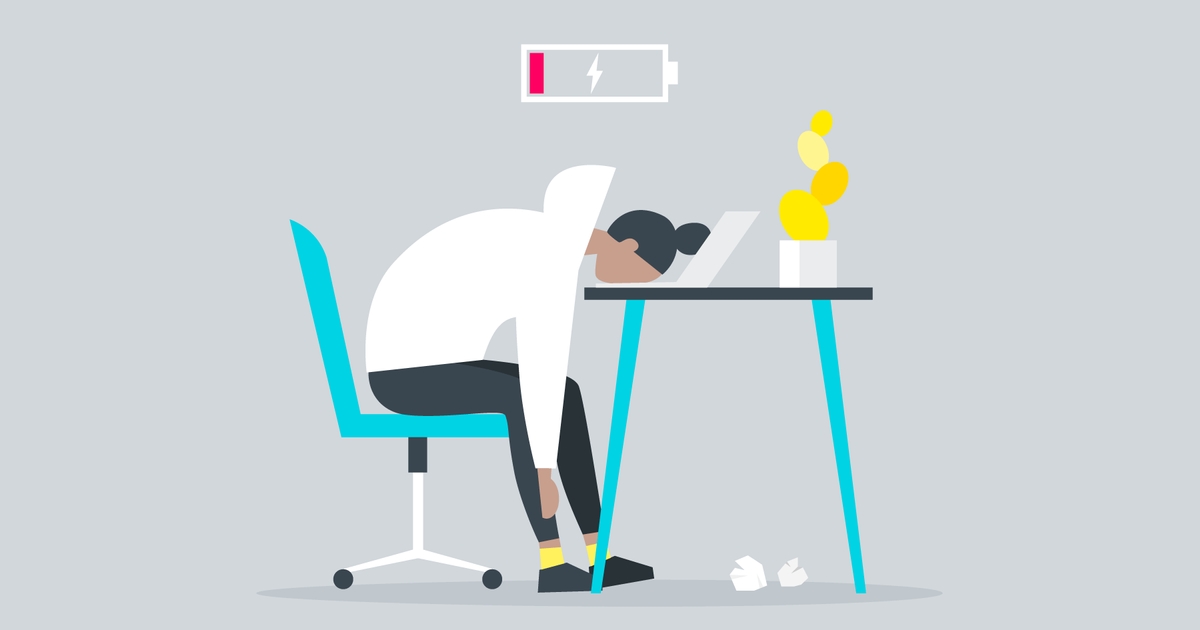We live in a society where there is a normalization and glorification of being busy, stressed, and highly productive. Many people feel the pressure of competing demands from a high pressure job, caring for a family, maintaining a social life, and trying to find some time for self-care. It can start to feel impossible to do it all. The result can be feelings of disillusionment, exhaustion, helplessness, overwhelm, and ultimately, burnout.
So, what is burnout?
Burnout is the feeling of exhaustion that results from excessive and prolonged stress. According to Freudenberger (1975), burnout results from a combination of 3 factors: emotional exhaustion, depletion of empathy or compassion, and a decreased sense of accomplishment. Some additional signs of burnout can include: decreased productivity, feeling drained or tired every day, loss of motivation, diminished satisfaction, feelings of failure or self-doubt, withdrawal from responsibilities, and physical symptoms such as frequent illness, headaches, or stomachaches.
Coping With Burnout:
If you recognize yourself in these symptoms, you are not alone. The following steps can serve as a starting point for coping with some of the symptoms of burnout.
Step 1: Recognize
– Take time to consider which symptoms of burnout you resonate with. What were the signs that you were starting to feel burnt out? When did you first start to notice this? What was going on at the time? What warning signs could you look for in the future?
Step 2: Reverse
– Once you have acknowledged that you are feeling burnt out, the next step is to seek support. Many people find asking for help challenging; however, oftentimes people will surprise you with their willingness to step in to take something off your plate and this could make all the difference!
Another important aspect of reversing symptoms of burnout is to manage stress. One thing to consider is that stress (the physiological response in your body) is different from stressors (the external or internal factors that cause stress such as a work deadline, money, parenting demands, self criticism, etc.). Regardless of the stressor, we need to remember to complete the stress response cycle in our bodies (Nagoski & Nogoski, 2019).
This means responding to the fight, flight, or freeze response in the body in a way that gets rid of the adrenaline and cortisol that has built up in response to the stressor. The best way to do this is through exercise; however, some other strategies that work to complete the stress response cycle are crying, affection, creative self-expression, and positive social interaction (Nagoski & Nogoski, 2019).
Step 3: Reassess
– Consider what changes you could make to your situation, both in the short-term and in the long-term. Can you readjust your workload, delegate tasks to someone
else, set some boundaries, or take time to find a solution to a problem that has been stressing you out? Additionally, take some time to look at the bigger picture. Do you need to make a larger change, such as looking at other career opportunities? Reminding yourself that you have the power to choose to work through the current situation or to try something new can provide an increased sense of control and agency over the situation and your life.
Step 4: Resilience
– This is where self-care comes into play. Once you have reduced some of the stressors impacting your emotional well-being, prioritizing exercising, eating healthy, and sleeping well is the next step in ensuring that you are emotionally and physically healthy. Another way to build resilience is through social interaction. As social creatures, we rely on one another for connection, support, and well-being so take notice of opportunities for connection with others or reach out to someone who you haven’t talked to in a while. The final aspect of resilience is to make time for yourself – for self-reflection, relaxation, solitude, or simply a moment of self-compassion.
You don’t have to do this alone. If you are interested in accessing support to work through your feelings of burnout, our counsellors at Synergy Counselling are available to help. Contact us at admin@synergycounselling.ca or 250-314-0298 to find out more.
References:
https://www.helpguide.org/articles/stress/burnout-prevention-and-recovery.htm
Freudenberger, H. J. (1975). The staff burn-out syndrome in alternative institutions. Psychotherapy: Theory, Research & Practice, 12(1), 73–82
Nagoski, E. & Nagoski, A (2019). Burnout: The secret to unlocking the stress cycle. Ballantine Books.

